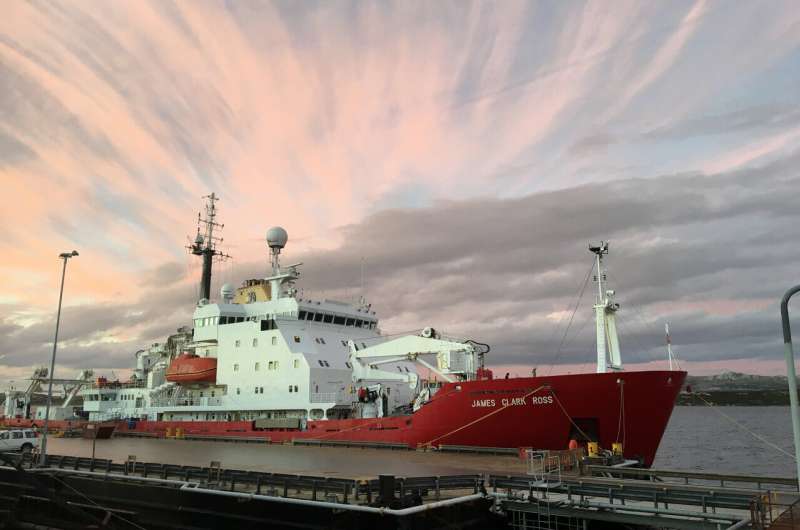New factor in the carbon cycle of the Southern Ocean identified

Plankton are small organisms that drift with the currents in the seas and oceans. Despite their small size, they play an important planetary role due to their immense quantity. Photosynthesizing plankton, known as phytoplankton, for example, produce half of the oxygen in the atmosphere while binding huge amounts of carbon dioxide (CO2). Since the Southern Ocean around Antarctica is very rich in nutrients, phytoplankton can thrive there. It is therefore a key region for controlling atmospheric CO2 concentrations.
As other nutrients are abundant, scientists have so far assumed that the amount of the available micronutrient iron determines how well phytoplankton thrive in the Southern Ocean. Researchers from GEOMAR Helmholtz Centre for Ocean Research Kiel and the UK's National Oceanography Center have now published a study in the international journal Nature Communications showing for the first time that in some areas of the Southern Ocean, manganese, not iron, is the limiting factor for phytoplankton growth.
"This is an important finding for our ability to assess future changes, but also to better understand phytoplankton in the past," says Dr. Thomas J. Browning of GEOMAR, lead author of the study.
Earlier research suggested that greater phytoplankton growth in the Southern Ocean was a key contributor to the onset of the ice ages over the past 2.58 million years. More phytoplankton was able to bind more CO2, which was removed from the atmosphere. As a result, average global temperatures further declined. "So it's critical that we understand exactly what processes regulate phytoplankton growth in the Southern Ocean," Dr. Browning points out.
Indeed, along with iron, manganese is another essential micronutrient required by every photosynthetic organism, from algae to oak trees. In most of the ocean, however, enough manganese is available to phytoplankton that it does not limit its growth.
Measurements in remote regions of the Southern Ocean, on the other hand, have shown much lower manganese concentrations. During an expedition on the British research vessel RRS JAMES CLARK ROSS through the Drake Passage between Tierra del Fuego and the Antarctic Peninsula in November 2018, Dr. Browning and his team took water samples. While still on board, they used these water samples and the phytoplankton they contained to conduct experiments on which nutrients affect growth and which do not.
"In doing so, we were able to demonstrate for the first time a manganese limitation for phytoplankton growth in the center of Drake Passage. Closer to shore, iron was the limiting factor, as expected," Dr. Browning reports.
After the expedition, the team used additional model calculations to assess the implications of the experimental results. Among other things, they found that manganese limitation may have been even more widespread during the ice ages than it is today. "This would make this previously unaccounted for factor a central part of understanding the ice ages," says Dr. Browning.
However, because this is the first record in a specific region of the Southern Ocean, further research is needed to better understand the geographic extent and timing of manganese limitation in the Southern Ocean. "We also still need to study what factors control manganese concentrations in seawater and how phytoplankton adapt to manganese scarcity. All of this is critical to building more accurate models of how the Earth system works," Thomas Browning concludes.
More information: Nature Communications (2021). DOI: 10.1038/s41467-021-21122-6
Journal information: Nature Communications
Provided by Helmholtz Association of German Research Centres



















